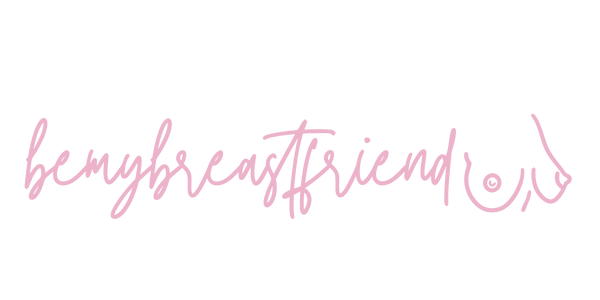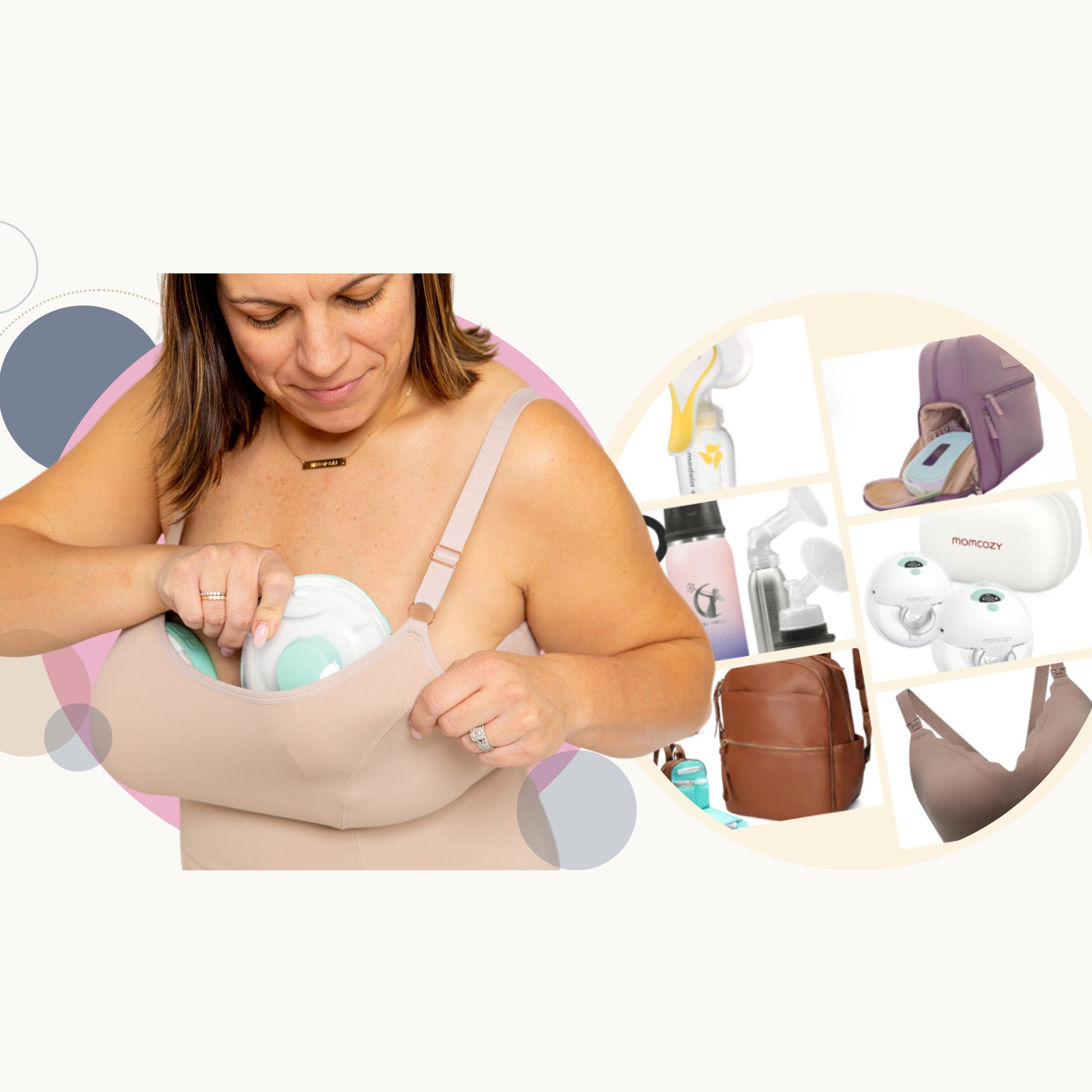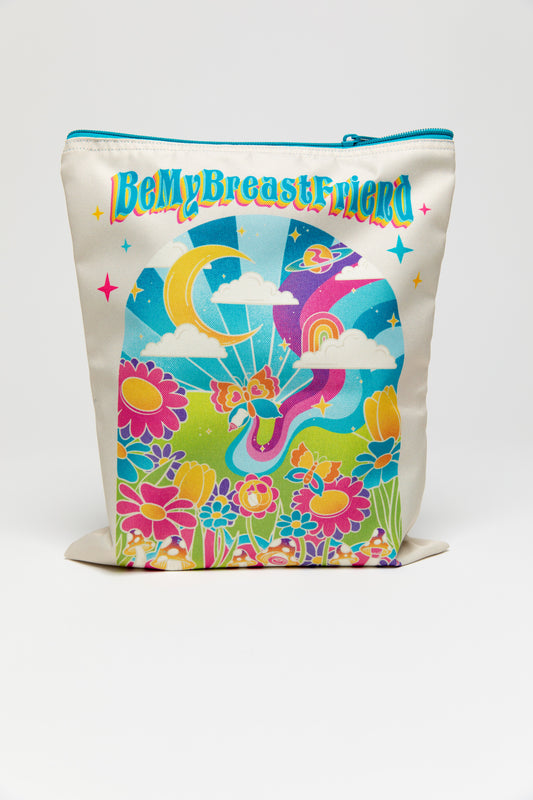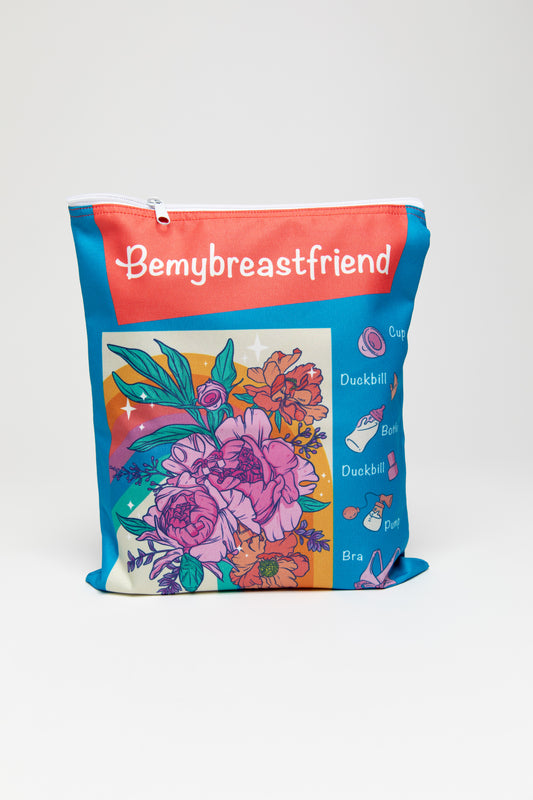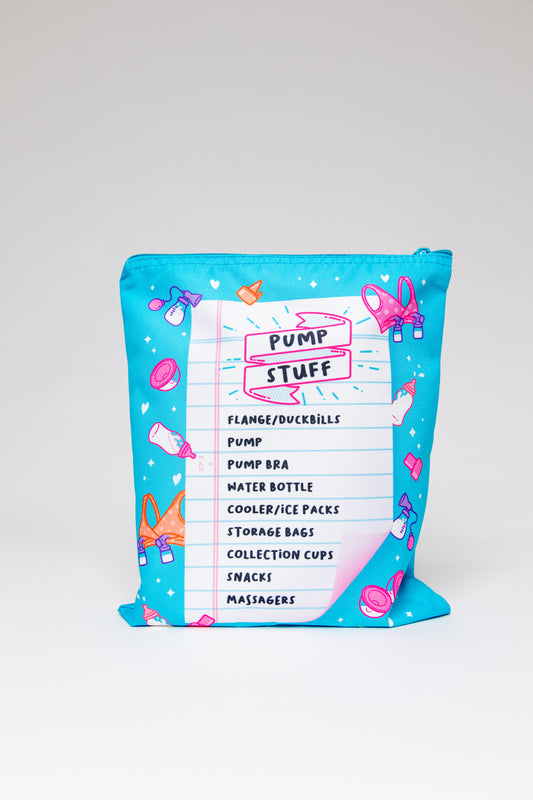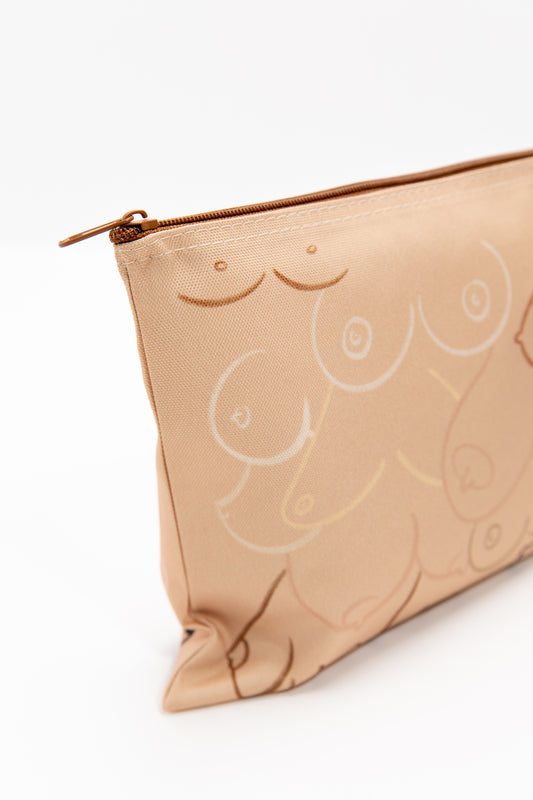
When I say breastfeeding, I mean any method of getting breast milk into your baby—whether you’re nursing, pumping, or both. All of it counts. And, unfortunately, all of it can be painful at times. But is it normal for breastfeeding to hurt? The short answer is that it depends on many factors. Some discomfort is expected when you first start, but if you’re wincing, clenching, crying, or cussing every time you nurse or pump for weeks on end, we need to dig into the “why.” Nipple pain can come from a dozen different angles: a less-than-perfect latch, poorly sized pump parts, baby’s anatomy (think tongue or lip ties), nipple shape and elasticity, your pain tolerance, skin sensitivity, and even your pump settings. The great news is that the most common causes of pain during breastfeeding are fixable.
Let's Talk About Nursing First
Is it normal for breastfeeding to hurt when you’re nursing? Maybe you've heard someone say “If your baby has a perfect latch, it shouldn’t hurt at all!” Or the opposite: "Breastfeeding is SO painful, I couldn't do it." Let me keep it real for you: Some pain is normal in the first week or two of nursing. A tiny human is repeatedly sucking on your nipples all day long. Even with a “perfect” latch, that’s a new sensation for your body—one your nipples didn’t exactly train for in advance.

There are two types of discomfort that many new moms experience that fall under the “normal part” of the nursing adjustment period, and they might present themselves until a few days following delivery:
-
That sharp, weird stinging feeling during let-down—This happens about 30 seconds to a minute after your baby starts nursing. Your milk decides to start flowing like someone flipped a switch. That’s your let-down reflex, and it can feel like tiny nipple daggers for a few seconds. Once the milk is flowing and your baby's sucks are long pulls instead of quick sucks, the discomfort should resolve and it should become much more comfortable. It still might not be the most pleasant sensation while you're new to it, but it shouldn't be toe-curling for more than those first 30 seconds to one minute. I should note - this initial pain will disappear with time.
- Tender nipples that slowly start to acclimate to their new use. With regular nursing, your body adapts. Eventually, the sensation should feel more like a gentle tugging than anything sharp or searing. Tender nipples may be more likely to be felt in between feeds rather than during them.
The level of pain can vary from mom to mom. If you’re someone with sensitive skin and/or a low pain tolerance, you might find the frequent feedings of the newborn stage a little rough. But it should improve with time. If your baby has a deep latch, and good positioning, you’ll be in a much better place within one to three weeks. If they’re just chomping at the tip of your nipple, you'll be in significant pain until you develop the proper latch. Remember it's called breastfeeding, not nipple feeding.
Here's my suggestion about when it's time to reach out to an International Board Certified Lactation Consultant (IBCLC): Either you're writhing in pain for entire feeds (even after the first minute) and/or your nipples are showing signs of nipple trauma.

- What does nipple trauma look like? Think cracked, bleeding, scabbed, blistered, or lipstick-shaped nipples. You might also see cracks, peeling skin, or a white spot. This is NOT just your average tender nipples. This is your body waving a big red “please fix this” flag. Fortunately, you CAN still breastfeed through nipple trauma as long as your baby has a good latch. I know latching a baby when you have open wounds on your nipples doesn't sound ideal, but the tip of your nipple shouldn't be the only thing in baby's mouth. Remember, DEEP asymmetrical latch, meaning baby should also be taking in breast tissue with flanged out lips.
When you reach out to an IBCLC, they can monitor a nursing session and check for the most common reasons nursing hurts: shallow latch, baby’s mouth anatomy (like a tongue or lip tie), uncomfortable positioning, etc.
Whether you have the average tender nursing nipples or cracks that need to heal, there are products on the market that help speed up the process. Here are a few of my favorites:
-
Medihoney gel – for when your nipples feel like they’ve been sandpapered
-
Organic nipple cream – soothing and safe. This one is lanolin free because who wants an allergic reaction on top of nipple pain?
-
Gel pads – put them in the fridge for the best little spa treatment for your sore nipples
-
Silverette nursing cups – the fancy Italian armor your nipples deserve in between feeds to promote healing
- Breast shells or milk collectors – another option to protect sore nipples between feeds and keep your shirt from being constantly covered in milk in the early days
Bottom line? It’s a good idea to pay close attention to your pain - both the type and the intensity. It can absolutely be part of the journey, especially for a first time mom, but it shouldn’t be unbearable. If it is, there is support available!
What About Pain During Pumping?

In my opinion, it is not normal for pumping to hurt if you’re doing it correctly. For many moms who are having trouble making nursing more comfortable, pumping can be a pain-free option. That said, if you’ve never pumped before, or perhaps you have a new pump, then expect that it’s going to feel weird. But weird is different from painful.
Pumping should feel like a gentle tugging sensation on the nipple and slightly the areola. Your nipple should not be the only thing being pulled into the flange, nor do you want too much breast tissue. Like feeding at the breast different parts of your breast will team up making the pumping experience most comfortable. If pumping does hurt, that’s usually a sign something needs adjusting. One of the most common reasons pumping hurts is improper use of the breast pump, especially when you're just getting started.

So let’s troubleshoot:
- Do you have a high-quality pump? Because not all pumps are created equal. Here’s why that matters.
- Do you have the right flange size? The wrong size flange can cause damage to your nipple, especially if it's too small. On the other hand, a flange size that's too big will restrict milk flow. Here are three easy ways to check your flange size.

- Do you have elastic breast tissue? If so, your nipples might be stretching and hitting the end of the tunnel, which is a recipe for discomfort. Here’s how to deal with that.
- Are your pump settings too strong or too fast? First, start slow and low—more isn’t always better. Cranking the suction to max doesn’t equal more milk.
- Are you using a lubricant when needed? Sometimes it’s a good idea.
If you’ve done all of the troubleshooting above and you're still experiencing pain while pumping, it’s worth reaching out for help figuring out what’s going on. Persistent pain could signal a deeper issue that needs different pump parts or medical treatment.
Clogged Ducts and Mastitis Are Their Own Beast
Alright, now we’re stepping out of nipple pain territory and into the land of full-on breast pain. We’re not talking about adjusting a latch or treating nipple trauma here. If you've never had one, a clogged duct is inflammation of the breast tissue that obstructs milk flow. This usually happens as a result of milk not being effectively removed (whether pumping or nursing). You might notice a tender lump or redness on the affected breast. If you want the full deep-dive into all things clogs, check out this blog post on clogged ducts. I go into everything from what causes them to how to get rid of them and when to seek professional medical care.

A clogged duct can often be managed at home especially if you catch it early. Think gentle massage and cold compresses to the area of your breast experiencing pain, ibuprofen for the inflammation, and regularly scheduled feedings or pump sessions to encourage milk flow. Thankfully, breast discomfort from a clogged duct doesn’t usually make breastfeeding itself more painful—it’s more like you’re walking around with a sore, angry boob all day. If your baby latches fine or your pump is set up correctly, you shouldn't be more uncomfortable than normal.
I wouldn't recommend to ignore inflammation in the breast but I wouldn't encourage you to beat up your breast worsening symptoms. Sometimes the best thing is to lay down, get in rest and come back at the next feeding or pumping session, add some lymph massage to encourage drainage of both the edema and milk removal. If things worsen after 24 to 48 hours it may need some extra attention, espcially if you develop flu-like symptoms that don't subside after 48 hours. Symptoms such as; fever, chills, body aches, possibly red streaks on your breast(s) can be a sign of on-set Mastitis, but not to fear this doesn't always need immediate medical attention.
So, is it normal for breastfeeding to hurt? NOT when it's from clogged ducts. That’s a whole separate issue. If one or both of your boobs feel like they’ve been hit by a truck, you’re probably dealing with more than just a normal part of the breastfeeding experience.
Final Thoughts: Should It Hurt This Much?
When your baby’s mouth repeatedly tugs on some pretty sensitive real estate, yeah, it's not going to be the most pleasant. But once you and your baby get the hang of things, it should become much comfortable, hopefully even pleasant and soothing, cue Oxytocin. As a pumping and nursing mom to my youngest babies, I will say there's something special about those precious nursing moments.

If you're having intense pain while breastfeeding, especially if you're still crying in pain for many minutes after the first week, it's time to call in backup. And if you’re experiencing breast pain with flu-like symptoms, or anything that feels beyond what you can handle from home, don’t wait. Reach out to your primary care provider or OB. Please know that it is VERY common to wonder “Is it normal for breastfeeding to hurt?” While the initial answer is "kinda," the goal is for the answer to eventually be, “Nope. Not anymore.”
